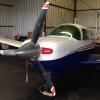Crosswind landing technique
-
Members Online
- ArtVandelay
- GMBrown
- Hank
- 1980Mooney
- eman1200
- Crawfish
- Planegary
- Thedude
- hammdo
- atpdave
- mluvara
- Dwb62
- IvanP
- QWright
- mooniac58
- PeytonM
- good2eat
- ad5ut
- ericrynehess
- rbmaze
- Blaze
- 201Mooniac
- toto
- rklems
- MikeOH
- Logwes21
- FAST FLIGHT OPTIONS LLC
- Schllc
- mpess
- mmcdaniel33
- GoDemonDeacons
- jeremyc209
- Rmfriday
- Skates97
- Mooney in Oz
- Matt M
- JMo
- rpyle
- kortopates
- Aaviationist
- Sgb318
- Steve Dawson
- Justin Schmidt
- TravelingIA98


Recommended Posts